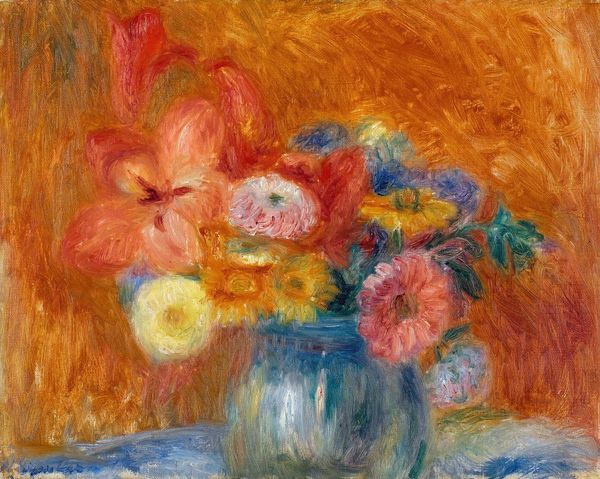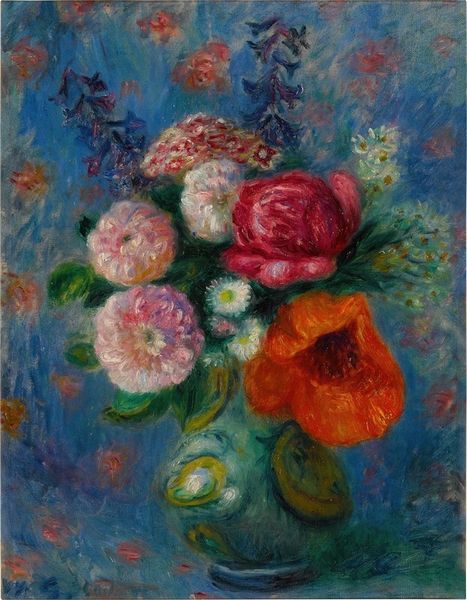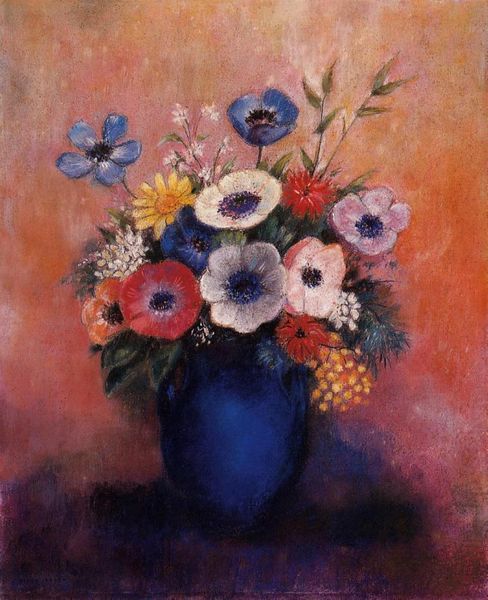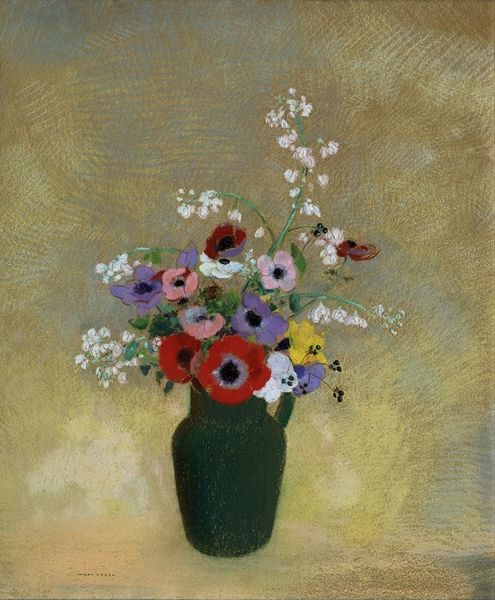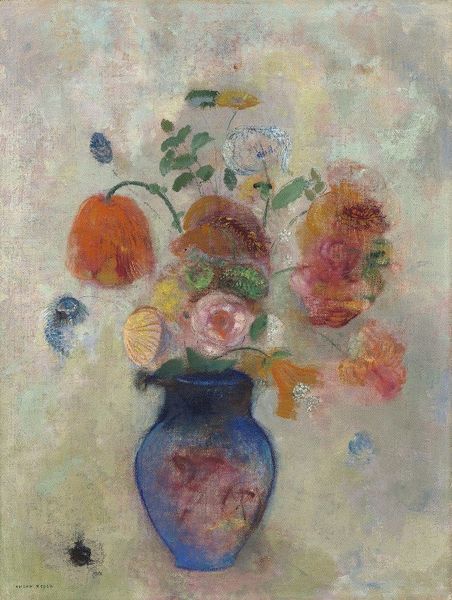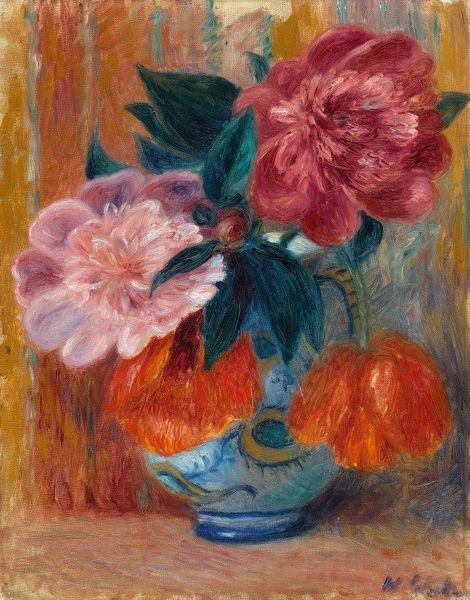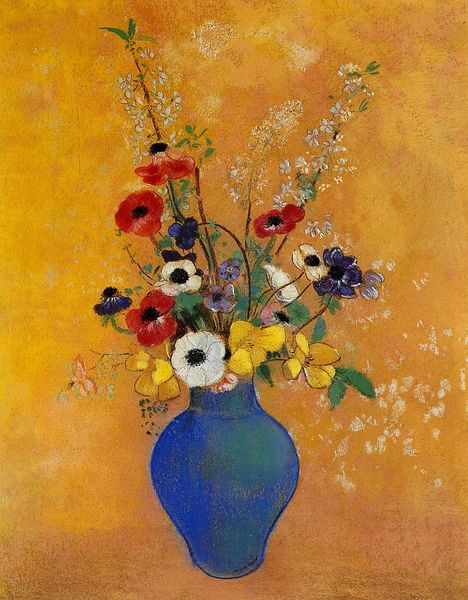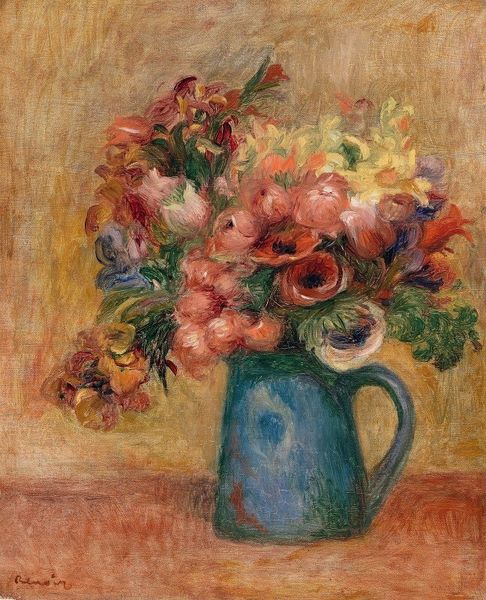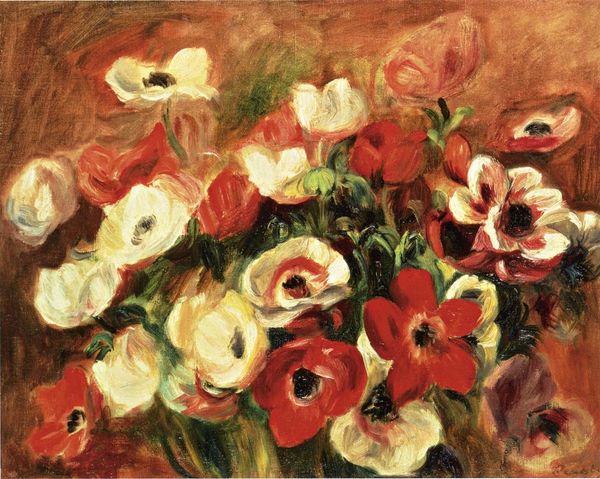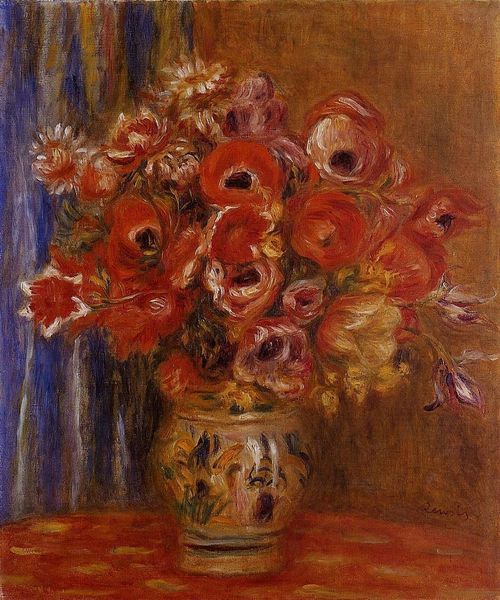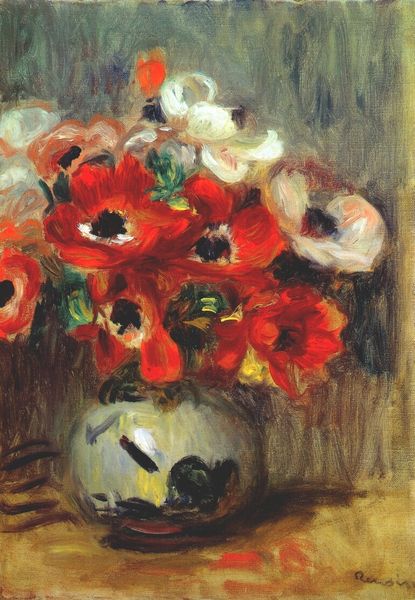
painting, oil-paint, impasto
#
painting
#
impressionism
#
oil-paint
#
oil painting
#
impasto
#
modernism
Copyright: Public Domain: Artvee
Curator: Renoir’s “Flowers,” painted around 1885. It's an oil painting; the thick impasto is quite visible. What do you make of it? Editor: A certain delicate vivacity strikes me. It feels less about the individual blooms and more about the overall effect of abundance and transient beauty, wouldn’t you agree? Curator: Indeed. Let’s think about the labor and social context behind such a piece. The cultivation of these flowers, their arrangement, the manufacture of the paints and the canvas—all part of a complex system. The act of observing and painting flowers itself, in the 19th century, was a form of appreciating a culture where gardens had symbolic importance of class and wealth. Editor: That is such a valuable way to look at it. I'm also considering its status as a still life in contrast with societal restrictions on women at the time. Confined to the domestic sphere, painting still lives might have been a valid avenue of expression and exploration when they were not granted entry to more prominent subjects as the large scale historical paintings. Perhaps the transience it reflects mirrored their fleeting opportunities? Curator: That certainly speaks to the gendered expectations influencing artistic production and consumption. Still, consider the pigments used here: the availability of new hues thanks to industrial chemistry significantly changed painting practices. Editor: You’re spot on about how production and science of paint are so intertwined in Impressionism! And, speaking of the effect of industrialization, it democratized access to these luxury goods—flowers becoming increasingly available to the masses, their image reproducible on postcards, decor... It’s a fascinating intersection of social class and representation. Curator: Precisely. The materiality of art always implicates economics, and consumption as related to beauty. It challenges the supposed distance between high art and everyday life by portraying, on an elevated, artistic form an element that has become an integral part of common aesthetics. Editor: What a thoughtful way to understand "Flowers" with a keen eye on its processes and broader narratives. I am reminded that looking at Renoir and art requires continuous discussion on its context. Curator: Yes, it underscores the role art plays in the history and complex nature of painting!
Comments
No comments
Be the first to comment and join the conversation on the ultimate creative platform.
